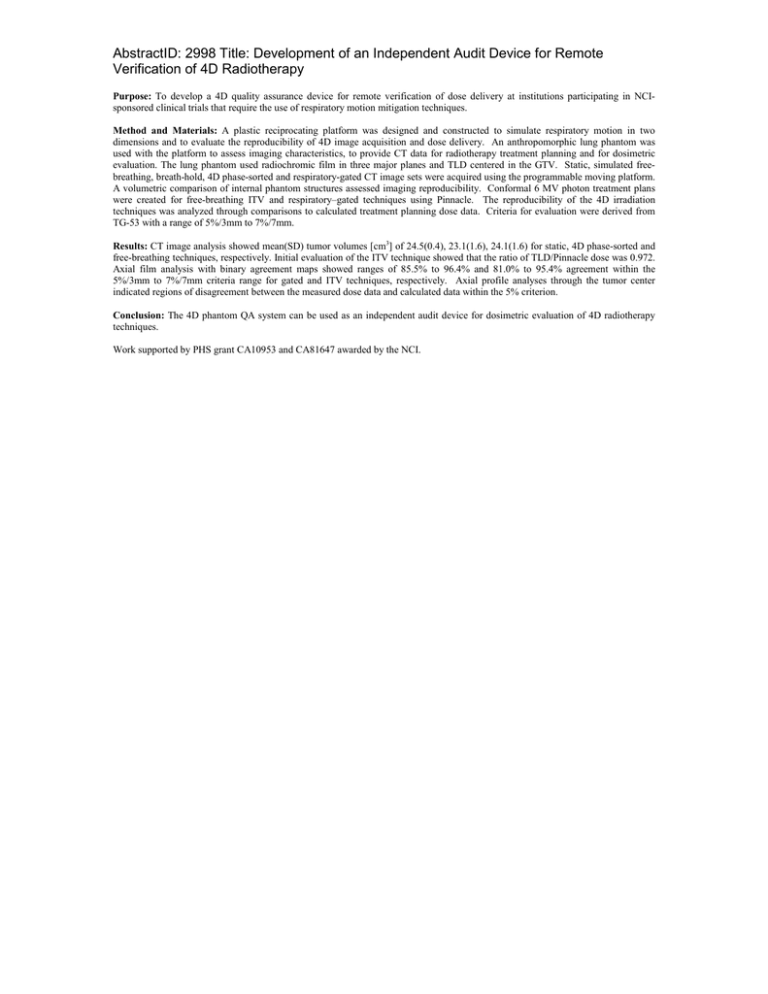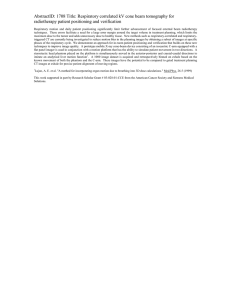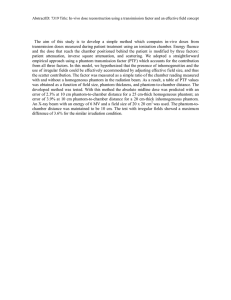AbstractID: 2998 Title: Development of an Independent Audit Device for... Verification of 4D Radiotherapy
advertisement

AbstractID: 2998 Title: Development of an Independent Audit Device for Remote Verification of 4D Radiotherapy Purpose: To develop a 4D quality assurance device for remote verification of dose delivery at institutions participating in NCIsponsored clinical trials that require the use of respiratory motion mitigation techniques. Method and Materials: A plastic reciprocating platform was designed and constructed to simulate respiratory motion in two dimensions and to evaluate the reproducibility of 4D image acquisition and dose delivery. An anthropomorphic lung phantom was used with the platform to assess imaging characteristics, to provide CT data for radiotherapy treatment planning and for dosimetric evaluation. The lung phantom used radiochromic film in three major planes and TLD centered in the GTV. Static, simulated freebreathing, breath-hold, 4D phase-sorted and respiratory-gated CT image sets were acquired using the programmable moving platform. A volumetric comparison of internal phantom structures assessed imaging reproducibility. Conformal 6 MV photon treatment plans were created for free-breathing ITV and respiratory–gated techniques using Pinnacle. The reproducibility of the 4D irradiation techniques was analyzed through comparisons to calculated treatment planning dose data. Criteria for evaluation were derived from TG-53 with a range of 5%/3mm to 7%/7mm. Results: CT image analysis showed mean(SD) tumor volumes [cm3] of 24.5(0.4), 23.1(1.6), 24.1(1.6) for static, 4D phase-sorted and free-breathing techniques, respectively. Initial evaluation of the ITV technique showed that the ratio of TLD/Pinnacle dose was 0.972. Axial film analysis with binary agreement maps showed ranges of 85.5% to 96.4% and 81.0% to 95.4% agreement within the 5%/3mm to 7%/7mm criteria range for gated and ITV techniques, respectively. Axial profile analyses through the tumor center indicated regions of disagreement between the measured dose data and calculated data within the 5% criterion. Conclusion: The 4D phantom QA system can be used as an independent audit device for dosimetric evaluation of 4D radiotherapy techniques. Work supported by PHS grant CA10953 and CA81647 awarded by the NCI.

